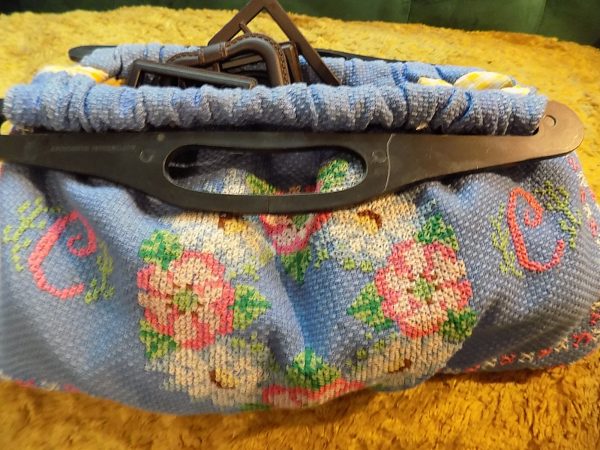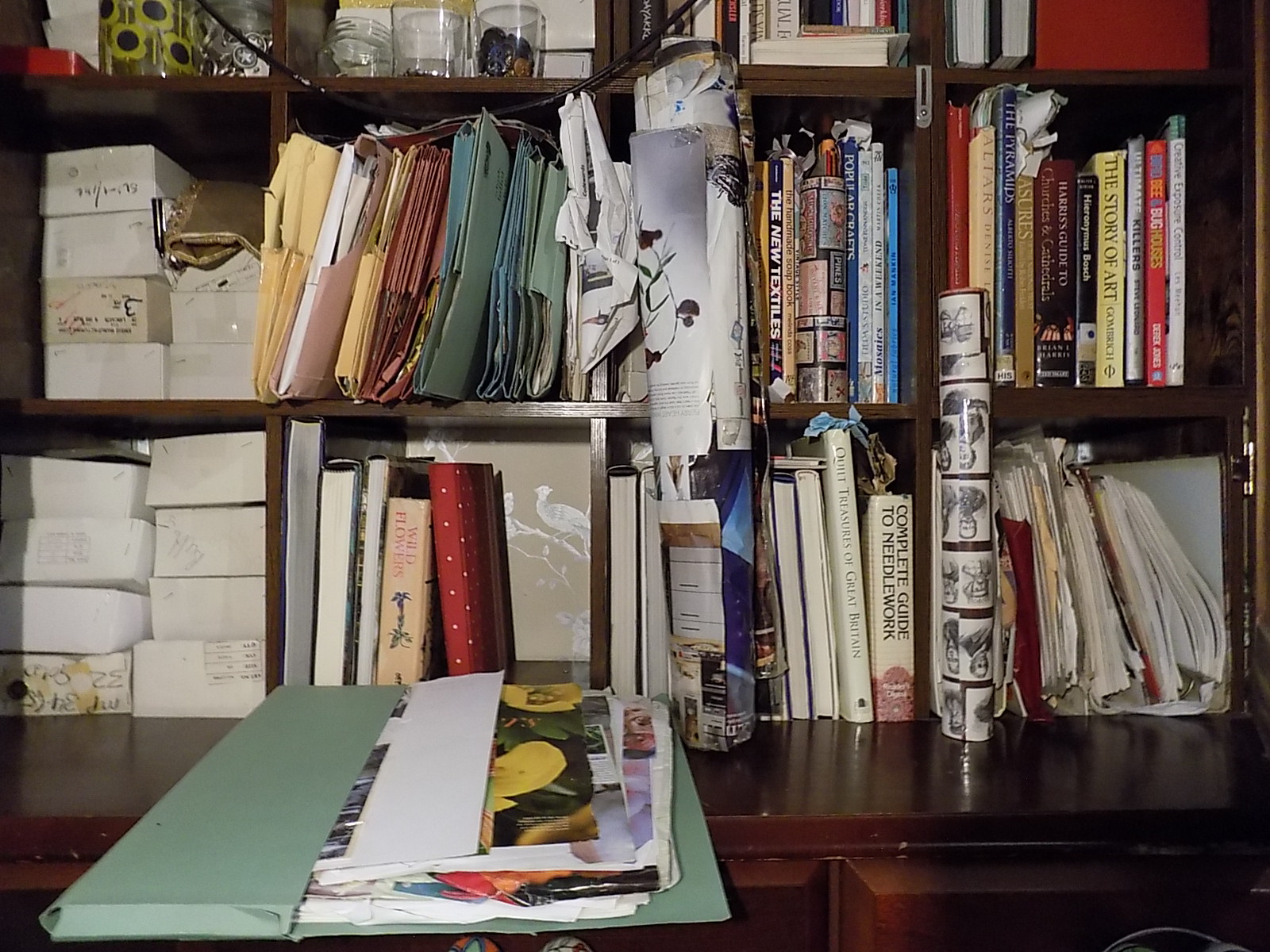
Creating a working environmental that is right for you can make a huge difference to your creative output. Many people work from home now. I have the luxury of using the garden in the summer months and sit looking out onto it for the rest of the year. It is my inspiration for The Natural Collection.

I use my floor, bed and sofa as large surfaces on which to quilt works and the outside wall of the house to photograph finished pieces. A space in which to work with good lighting is necessary for longevity. Whatever your working environment you need to be organised and have all the elements of your inspirational library easily accessible to you.

Being able to house it behind doors or screens is ideal because it creates a restful space in which to sew. Delve into it as a resource when creating new projects and gathering embellishments. I enjoy being swept along in the excitement of new possibilities but do not want to be distracted when planning and concentrating on hand sewing.

Let us explore storage for fabrics and embellishments, creating a visual library and housing your textile collection.
STORAGE – Fabrics
I have a huge hoard of fabrics stored in the loft. Large transparent plastic boxes with lids allows you to sort fabrics into colour combo’s and create projects for the future. Sort fabrics according to size with large pieces for backing and variations in length and remnants for detail. Zip lock plastic bags are great for creating colour palettes with scraps for tatty matting. Always label your storage. Paper labels can be edited and replaced. Sealed plastic prevents fabrics from becoming damp and dusty.

Storage – Embellishments
Glass jars create a stash of visible embellishments for small jewels, beads and buttons, ribbon and lace.

But if you do not have a large storage space, cardboard boxes are ideal because they can be stacked. Use a coding system for quick access.

Pretty purses and bags can be used for flat storage and are inspirational.

For larger volumes of the same type I use old metal containers and bread bins with lids. I store my collection of buckles in an embroidered sewing bag I made at school.

Vanity cases and hat boxes are ideal too to create themed collections.

I keep a random mix of sewing threads, ribbon, lace, elastic, curtain header tape, tools etc in an old desk and a wonderful piece of furniture designed specifically for sewing. It’s a great workable unit with a removable top section for your everyday sewing kit. This treasure of a bygone era was found on freecycle.

It’s fun to create an eclectic mix of objects to house your textile hoard. Explore charity shops, car booties, flea markets and freecyle for hidden treasures. Seeing them grouped together can inspire creativity.
Storage – Creating a Visual Library
Collecting books on artists you admire and subjects to inspire…

manuals on technique…

and magazines which are on trend…

…is a great source of visual stimulation to get those creative juices flowing. Having an organised space where you can create a library of topics is valuable in time management. I cannot work in chaos. Building a collection of ideas in journals and sketchbooks, collecting scraps in jotters…

…and creating large mood boards which can be rolled up and tucked away captures your thoughts to be revisited later.

Our memory and imagination are great assets. We can tap back into our thought processes when we revisit visuals we have created. It is a very different experience working with imagery you can hold and have created yourself to having images collected on screen (Pinterest boards and folders of photographic images transferred from phone and camera). I use all of these methods to provide a stimulating library.
Housing your Textile Collection
My wall hangings are rolled and housed on large metal shelving units to accommodate weight, maximizing space from floor to ceiling. Some works are very large and need to sit over two shelving units. Having open ended units allows air to circulate and work is easily accessible. Pieces waiting to be photographed are separated from finished work. Label according to theme. Folding wicker panels protects against dust and provides a tranquil setting in which to work.

Being organised is key to being productive. Accessing information quickly and being able to see what stock you have available to you promotes a good working environment which is stimulating for new ideas and practical to allow you to work through the various stages of your textile. Having an ordered home is key in limiting distractions and to keep you focused, especially if you do not have a designated work room. And with no commute you can take advantage of the extra time you have in your day. Setting up a daily routine can be beneficial, though I am more organic in my approach, going with the flow when I am excited. Having textiles at various stages can help to create a more diverse approach. The finishing process can be more time consuming than you realise. Mix it up for a thriving working week.






